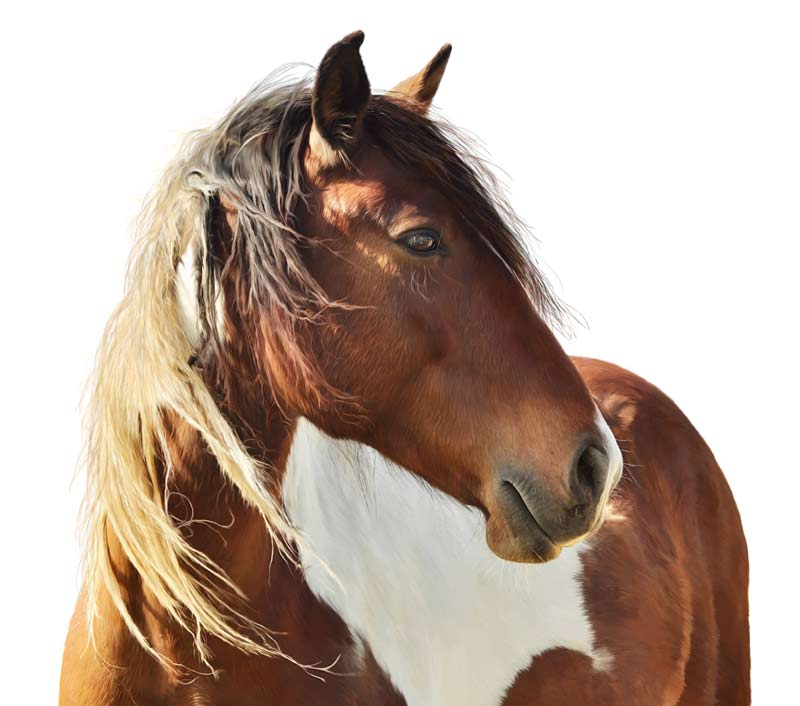Hair Analysis For Horses
Identify common mineral deficiencies within your horse, and solutions for a healthier, happier animal.
Hair Analysis for Horses
Identify common mineral deficiencies within your horse, and solutions for a healthier, happier animal.
Order Equine Hair Mineral Check Test Today
Horse Hair Analysis in the UK
Every show jumper and sports horse owner will understand the importance of a good diet to obtain and maintain peak performance. But even when your horses are fed the best diet, they still get exposed to toxic elements through their environment. Food storage containers, building materials; treated wood and lead based paint, pesticides from crop spraying and land pollution for example.
Your animal can be exposed without your knowledge which can lead to a build-up of toxicity in its system, affect its general wellbeing and most of all its performance.
You may have already noticed signs of equine fatigue which include panting, sweating and dehydration and this can be down to a mineral imbalance caused by build-up or deficiency.
These are the most common statements and questions we hear
My horse seems really tired and lethargic
My horse is getting muscle tremors
Why is my horse's coat fading in colour?
What affects a horse's performance?

We’re happy to say that the answers to these questions and many more are found in the test results.
Most of our horse owning clients are smart and already understand about copper and iron deficiencies, but to be absolutely sure they know that by getting the test done, they are saving themselves a lot of time, money and headaches in the future.
By using a hair tissue mineral analysis (HTMA) as an accurate screening test, you will get invaluable information about your horses’ health and if used as early detection, it can prevent serious health conditions and will also highlight the long-term effects of diet, stress and toxic metal exposure.
We’re happy to say that the answers to these questions and many more are found in the test results.
Most of our horse owning clients are smart and already understand about copper and iron deficiencies, but to be absolutely sure they know that by getting the test done, they are saving themselves a lot of time, money and headaches in the future.
By using a hair tissue mineral analysis (HTMA) as an accurate screening test, you will get invaluable information about your horses’ health and if used as early detection, it can prevent serious health conditions and will also highlight the long-term effects of diet, stress and toxic metal exposure.
Common Problems with Horses
If you’ve kept horses for a long time, you may have read about the influence of magnesium deficiency in horses or wonder about keeping a senior horse healthy, because mineral deficiency in horses is well known, but did you know it can cause abnormal cartilage or bone development in your horse? And that younger horses are at greater risk of nutritional deficiencies which can lead to poor performance? Keeping horses can be costly, so disease prevention is both a life and a money saver. Not only that, but as soon as we know what the problem is, we use our extensive knowledge & expertise to recommend the supplements needed to get your horse back to peak performance.
Getting a hair mineral analysis for your horse is essential for keeping them in great health and the cost of prevention with HTMA will always be cheaper than the vets bill.
“Thanks to hair mineral analysis People4Ponies were able to identify some of the causes why ponies from East Minions and Bodmin Moor were suffering. Having identified the toxic elements we were then able to campaign to releive the plight of these ponies. The area these ponies were grazing had previously been a mining area and the hair mineral tests identified the toxic elements that were a root cause of the suffering. Once we had the right information – provided by the hair mineral tests – we were able to start campaigning.
The test has also been useful in identifying nutritional deficiencies in a few of our rescue ponies and enabled us to return them to health with the right nutrients and diet.”
Taking a Hair Sample
Firstly, the hair must be untreated, washed and rinsed thoroughly and completely dried. Next, cut small portions as close to the skin as possible at the back of the neck, lower section of the mane, avoiding the skin where any treatments are applied.
Please use high grade stainless steel or plastic scissors to avoid contamination. The required amount of hair needed for testing is half a gram, or approximately one tablespoon of proximal (root), at a length of no more than 6cm.
This reflects the most recent metabolic activity. Place this in the sample collection envelope provided and discard any remaining hair.

Order Your Mineral Check Test Today
